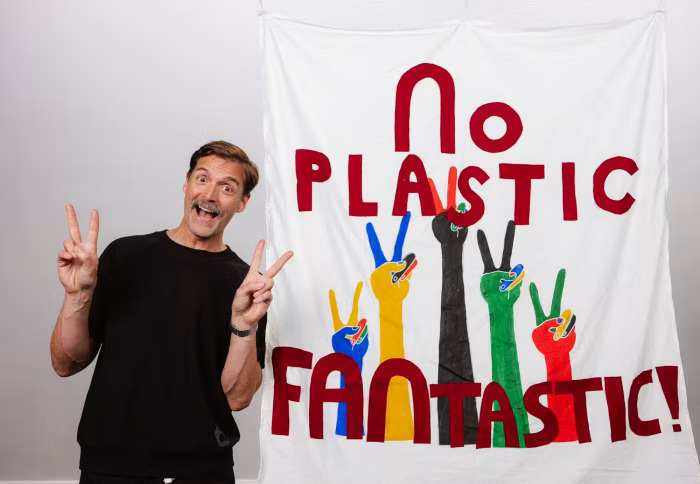Community Clothing, the sustainable clothing brand and social enterprise by Scottish fashion designer and self-described “polymer-nerd” Patrick Grant, has launched a range of 100% plastic free sportswear inspired by clothing materials from the 1970’s.
The range, named Organic Athletic, forgoes the usual oil-based synthetics used in modern sportswear for pure organic, natural, and biodegradable plant-based technology. Taking around five years to create, this innovative line of performance sportswear uses zero plastic materials, zero oil-based materials and 100% plant-based fabrics.

The 13- strong range is made from 100% certified organic cotton, with unique fabric technologies developed by the Community Clothing team – the elastic is a blend of organic cotton and natural rubber, every product is sewn using a cotton thread thicker than its polyester counterpart and care instructions are printed onto the inside of the garment using a non-toxic water based ink, to forgo the industry standard oil-based woven labels.
So how does Organic Athletic perform? Synthetic sportswear may have a technical edge over plant based but it is a very slight difference – clothes will dry a little faster and will have a little more material stretch in the case of elastane fabrics. But this doesn’t necessarily mean that you will be more efficient in synthetic clothing.
“Roger Bannister broke the four-minute mile wearing cotton shorts, a cotton vest and leather shoes. And I played rugby as a kid wearing clothes made from all natural materials,” Grant told the Financial Times. “None of us thought we were wearing rubbish stuff at the time.”
Environmentally, there is no competition between synthetic and natural sportswear. With no oil extraction and no plastic production, organic cotton causes a fraction of the pollution. At the end of its life, it will naturally biodegrade – no mountain of waste plastic clothing, no pollution from incineration and no harmful ocean microplastic. The Organic Athletic range can be cut up and added to your compost heap ready to decompose – the process can take anywhere from one week to five months depending on the soil, but in the end, nothing will be left behind.

Sportswear’s plastic problem
Tens of millions of barrels of oil are used each year in the production of synthetic materials like elastane and nylon, used in modern athletic clothing to provide performance enhancing qualities such as stretchability, breathability, and quick-drying capabilities. While the processes of making these materials is highly polluting, the discarded synthetic sports clothes are another problem – adding to the growing global issue of non-biodegradable clothing waste.
Take the standard running short as an example, which can contain as many as seven different plastic materials in a pair of running shorts: from the lightweight woven shell, to the elasticated waistband, to the polyester care label. These non-biodegradable materials shed when we wear them and when we wash them, contributing vast microplastic waste in ocean, of which 33% is estimated to have come from our synthetic clothing.
“Community Clothing Organic Athletic represents the most radical change in sportswear in two generations,” Grant said in a statement. “Moving away from oil-based sports clothes to 100% natural and biodegradable means now you can exercise and play sport and not harm the planet in the process.”











